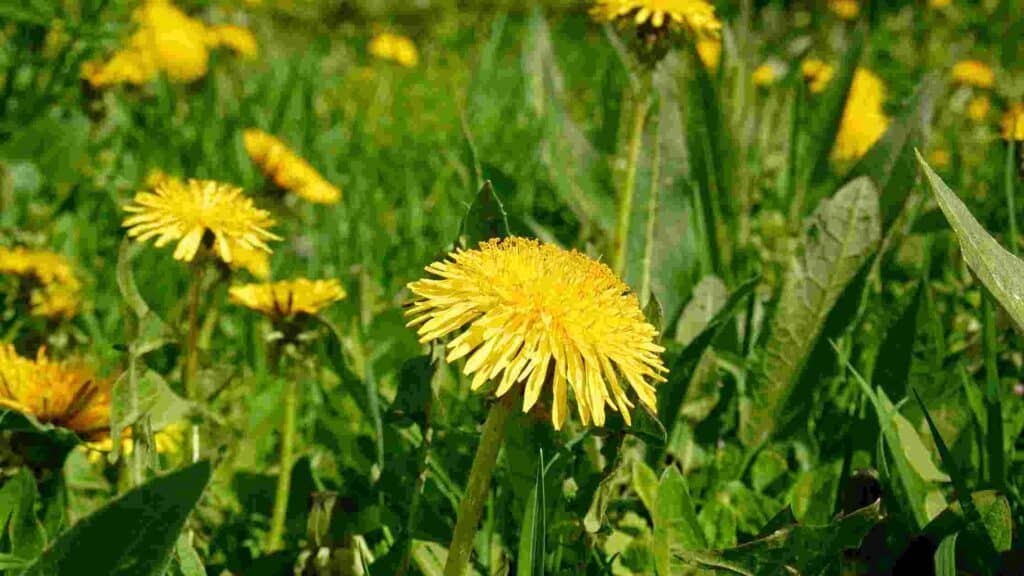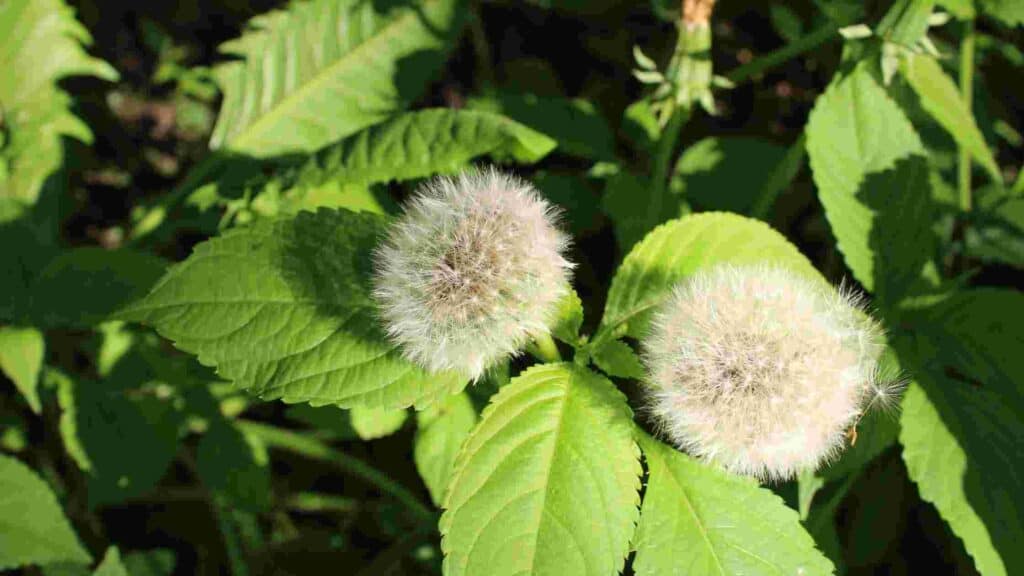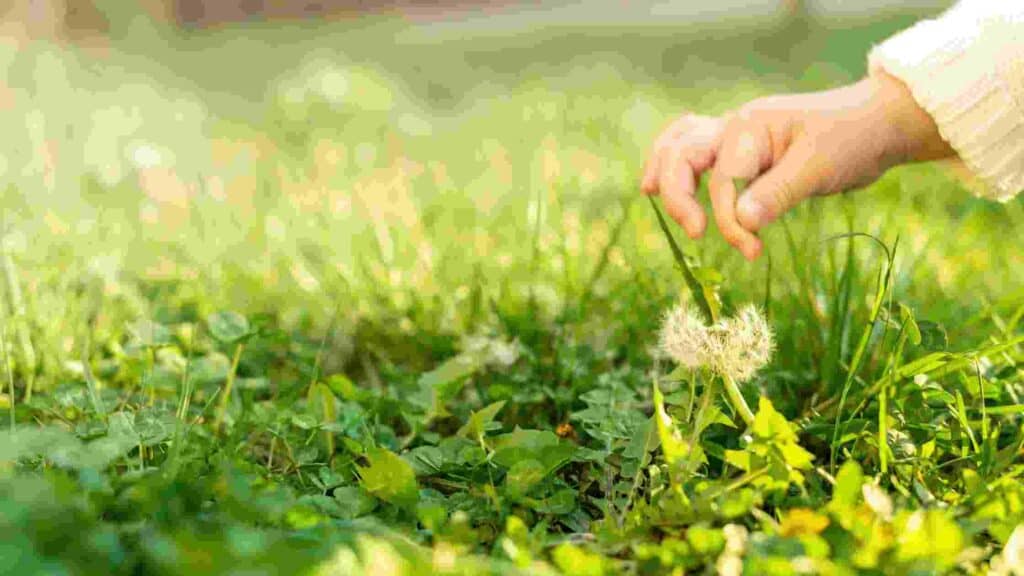Ah, springtime—the season when dandelions seem to pop up everywhere, invading your lawn. But hold on a minute, before you reach for that weed puller, did you know there might be a tastier way to deal with these plants? Can you eat dandelions from your yard?
Well, the answer is yes! And you’ll be surprised at the delightful culinary treats you can create with this often-dismissed weed.
So, let’s dig into this further.
Can You Eat Dandelions From Your Yard?
Even if some plants are edible, you should exercise caution when trying out new food, especially if it’s something you’ve never eaten before.
Let’s talk about dandelions, part of the Aster family, a large group of plants that includes familiar species like coneflowers, marigolds, and daisies.
If you’ve ever had lettuce in your salad or on a sandwich, you’ve actually consumed a member of this group.
What Part Of The Dandelion Can You Eat?

Now that we’ve got the caution out of the way, let’s dive into the exciting part – the edible parts of dandelions!
Can You Eat Dandelion Stems?
You can actually eat all parts of this versatile plant, but we recommend skipping the stems due to the bitter-tasting latex they contain – that’s the white liquid you might see oozing from the plants. This latex acts as a natural defense mechanism against pests and helps the plant heal from injuries.
Some people have experienced contact dermatitis from the latex found in dandelion stems. This could lead to an itchy rash on your skin, and while that might be manageable, having an allergic reaction in your throat could be quite serious.
So, if you notice any kind of reaction, it’s probably best to avoid dandelions altogether. Don’t worry, it’s not contagious!
Can You Eat Dandelions Flowers?
Surprisingly, you can also cook vibrant dandelion flowers!
One popular way to enjoy them is by battering and frying them. Dip the flowers in beaten eggs, coat them in a mixture of breadcrumbs and flour, and fry them until they turn a beautiful golden brown.
For extra flavor, try adding some spices like white pepper, rosemary, and thyme to the breading. Serve these crispy delights with your favorite dipping sauce and savor the delicate, sweet taste.
And if you’re feeling adventurous, why not try making dandelion wine? Yes, it’s a thing! There are countless recipes out there, each with its unique twist. To make a gallon of this delightful beverage, you’ll need around 6 cups or more of dandelion petals. Make sure to use only the petals and not the green stems to keep the flavor sweet.
Want to get even more creative? Experiment with adding fruits like lemons or oranges, or other edible flowers like daylilies, roses, or violets to enhance the complexity of your homemade wine. Don’t forget to get your hands on some wine yeast and a suitable container for fermenting the juice.
Alternatively, you can dry the dandelion flower petals in a dehydrator and make yourself a soothing cup of dandelion tea. It’s perfect for winding down at the end of a long day since it’s caffeine-free and offers a flavor similar to chamomile.
Can You Eat Dandelion Leaves From Your Yard?
First up, the leaves of dandelions are highly nutritious and have a slightly bitter taste, akin to arugula. They make a delightful addition to salads, especially when mixed with other greens that offer varying flavor profiles.
With their toothed appearance, dandelion leaves can even make your salad look more visually appealing. Feel free to use them as a substitute for other delicate leafy vegetables in almost any recipe.
If you prefer a warm, savory dish, try sautéing the dandelion greens with a bit of garlic and olive oil. Just like spinach, they’ll quickly wilt when heated, offering a tasty side dish. You can also toss them into casseroles or soups to add a splash of color and nutrients.
Can You Eat Dandelions Roots?
It turns out, their roots hold a surprising culinary treasure that’ll leave you craving for more. Trust us, we were just as surprised as you might be right now!
But before we get into the delicious details, we have to warn you – preparing dandelion roots takes a bit more effort than the previous recipes. You’ll need to do some serious digging to gather enough roots for a decent-sized batch.
Once you’ve collected them, give them a good wash, and then it’s time to roast them in the oven until they’re dry and perfectly toasty brown.
Grind up those dried roots in a coffee grinder and you’ve got yourself a fantastic caffeine-free beverage, just like chicory. By the way, chicory happens to be part of the same plant family as dandelions, which explains why they share a similar taste.
Where Did The Dandelion Originate From?
Dandelions, scientifically known as Taraxacum officinale, were not native to the United States or North America. They got here thanks to the European settlers who intentionally brought them along. Back in the old country, these settlers cultivated and enjoyed dandelions just as the ancient Greeks, Egyptians, and Romans did.
Now, it wasn’t just the taste that made dandelions appealing to our ancestors. They believed these bright yellow flowers had both medicinal and spiritual value.
Herbalists from yesteryears used them to treat a whole range of health conditions, from battling the blues to combating fevers and even dealing with baldness.
While we can’t vouch for all those claims, modern science reveals a lot of truth in the nutritional value of these greens.
Can You Eat Dandelions Straight From The Ground?

Now, here’s the deal—when it comes to eating dandelions from your backyard, you’ve got to take a few things into account. It’s all about location, or more precisely, it’s about what goes on in your yard.
Sure, history shows that dandelions have been safely consumed for centuries. So, in theory, they’re good to go. But there’s a big “if” lurking around—contaminants.
You’ll want to be cautious about any road salt, pesticides, or surface runoff that might have found its way into your yard. And let’s not forget our furry friends; animal access to your dandelions could also introduce some unwanted surprises.
So, while dandelions themselves are quite delightful and safe to eat, make sure you’ve got a clean and uncontaminated patch to harvest them from. That way, you can enjoy their deliciousness without any worries.
The Weed, The Noxious, And The Invasive
Picture a lawn carpeted with sunny, yellow dandelions—it might not be everyone’s dream landscape. After all, these vibrant blooms are often seen as weeds or misplaced plants, disrupting perfectly manicured lawns. And that’s where the trouble begins with pesticides (you may also be interested in learning how to keep weeds out of flower beds).
Before we delve into pesticides, let’s understand the differences between weeds, noxious plants, and invasive species.
Noxious plants are troublemakers; they pose a threat to native habitats and property owners, causing havoc to environmental, economic, or recreational areas. Think of species like garlic mustard, purple loosestrife, field bindweed, and ragweed.
Invasive plants, on the other hand, can quickly take over an area, forming monocultures that disrupt the ecosystem. Some examples include certain types of reed canary grass, goldenrod, and yes, our dandelions.
Pesticides And Dandelions
The battle with dandelions often leads to people resorting to pesticides rather than back-breaking weeding. Even if you’re not using these products in your yard, herbicides sprayed by your neighbor could drift over and contaminate your precious plants.
That’s why it’s crucial never to apply spray pesticides when the wind is gusting at more than 10 mph. You don’t want to end up poisoning the other plants in your beautiful garden.
Unlike the produce you buy from the store, where the EPA ensures your safety, your neighbor’s garden is beyond their jurisdiction.
So, washing your dandelions under running water can help reduce any lingering pesticide residues. But, the amount that might come in contact with your greens is likely tiny.
Animals And Dandelions
Animals, both wild and domestic, can be a bit of a challenge when it comes to your dandelions. If you can’t control these visitors from turning into your yard, you might want to take some pest-proofing measures.
But don’t worry too much; washing your dandelions thoroughly before munching on them is a sensible step to ensure they’re safe for consumption.
Road Salt And Surface Runoff
Now, let’s tackle a trickier part of the equation—road salt and surface runoff. Road salt can impact the soil, but its effects are often short-lived since salts dissolve over time (also check out the article: how long does it take for salt to kill weeds).
The real issue lies in the runoff, especially if your property sits at the bottom of a hill. Whenever it rains, all the road crud gets washed into your backyard — right onto your dandelions. Now, that’s a problem!
However, if your land is nicely elevated, you can breathe a sigh of relief, knowing that your dandelions are only getting their water from the rain or snow.
What Is The Best Way To Collect Dandelions?
Now let’s talk about how you can safely harvest these charming plants for your culinary escapades. The good news is that dandelions have a distinctive appearance, making them quite easy to identify.
You don’t need to worry much about mistaken identity. However, some plants like the catsear also resemble dandelions and are safe to eat, so don’t fret if you come across them.
When it comes to harvesting, keep an eye out for their distinctive leaves. As soon as they start emerging, you can begin your delightful dandelion gathering journey before the flowers even bloom.
The base of the taproot and the crown are also edible, offering a taste akin to yummy artichoke hearts – another delightful member of the same plant family.
What Time Of Year Do You Remove Dandelions?
Now, here’s a tip from us – spring is the best time to enjoy dandelion greens. During this season, their flavors are sweet and delicate, simply bursting with deliciousness.
However, as the growing season progresses, the leaves tend to get a bit stringy and bitter, so aim to indulge in their goodness earlier in the year.
If you’re keen on harvesting the dandelion flowers, be quick about it! As soon as they bloom, seize the moment and pluck them before the bees and other pollinators catch on to their sweetness. They’re at their sweetest during this time when they’re filled with nectar.
Now, let’s talk roots. You can wait until later in the year to dig up those taproots. The reward for your patience will be larger taproots, perfect for making that delicious dandelion coffee we mentioned earlier.
As for the timeframe, dandelions typically show up from March to September, depending on your location. So, you’ve got a generous window of time to gather, explore, and savor these plants.
How Do You Harvest Dandelions For Eating?

If you’re ready to embark on a dandelion harvesting journey, we’ve got some nifty tips to make it easy, especially if you need a larger quantity for recipes like dandelion wine. Let’s get you fully equipped for this delightful quest!
First things first, no matter how warm it is outside, be sure to wear long pants. It might not sound appealing, but it’s a smart move to protect your legs.
Next, since ticks can be active during the same time of the year, we highly recommend applying some insect repellent. It’ll help keep those critters at bay while you focus on gathering the dandelions.
Now, we know you’re eager to start picking, but here’s a handy tip – collect more dandelions than you think you’ll need. That way, you’ll have some extras to make up for any that you might end up tossing later.
Before you begin your dandelion hunt, take a moment to scan the ground around you for other plants like nettles or poison ivy. You don’t want to find out the hard way about these later (here’s how to get rid of poison ivy in the yard).
Tips On How To Pick Dandelions For Eating
When it comes to picking the greens and flowers, try to wait until the morning dew has dried. It’s the perfect time to pluck them without any moisture lingering.
Here’s a pro tip – if possible, pick dandelions from different sections of your backyard. By doing so, you’ll ensure that some seeds are left behind for another bountiful harvest in the future.
Now, we cannot stress this enough – be absolutely certain of your identification before you eat any plants. Safety first!
While we’ve covered the primary safety factors, we have to add a disclaimer. Dandelions, like any plant, have varying concentrations of minerals, vitamins, and other compounds based on where they grow. So, don’t go overboard with your harvest at any given time.
Take a small bite of the dandelions before preparing any dishes to ensure you don’t have any unexpected reactions.
What Are The Benefits Of Eating Dandelions?
If you’re looking to pack a punch of nutrients in your diet, dandelion greens are a great option.
These raw leaves are bursting with fiber, iron, and vitamin A — way more than you’ll find in your average spinach. So, by munching on these greens, you’re leveling up your nutritional intake.
But that’s not all—dandelions are also high in vitamin C. Back in the day, when proper food storage was a luxury, people struggled with vitamin C deficiencies during the long winter months.
Vitamin C is water-soluble, meaning our bodies can’t store it for later. So, getting a daily dose of it was vital. When herbalists suggested dandelions as a remedy for people suffering from periodontitis and scurvy, it was like a magic cure.
FAQs
1. How can you tell if dandelions are safe to eat?
You can tell if dandelions are safe to eat by ensuring they are from a pesticide-free location and have not been exposed to any harmful chemicals or pollutants.
2. How do you clean dandelions for eating?
To clean dandelions for eating, rinse them thoroughly under cold water and remove any dirt or debris.
3. Are dandelions good for your heart?
Dandelions are considered good for your heart as they contain antioxidants and may help lower blood pressure and cholesterol levels.
4. What happens if you eat a dandelion stem?
Eating a dandelion stem is generally safe and edible, but some people may find it bitter or prefer to eat the leaves or flowers.
5. Are there any side effects of eating dandelions?
There are no significant side effects of eating dandelions for most people, but some individuals may experience allergies or digestive discomfort.
6. Can you eat dandelion flowers raw?
Yes, you can eat dandelion flowers raw, and they are often used in salads or as garnishes for various dishes.
Conclusion: Can You Eat The Dandelions In Your Backyard?
You’re now armed with the knowledge and tips to embark on harvesting dandelions right from your own backyard.
There’s something deeply satisfying about living off your land and preparing your food, especially when you can create so many delicious recipes from what some consider a mere weed.
If you have any reservations about whether you can eat the dandelions in your backyard, set them aside. As long as you’ve taken the necessary precautions, you can confidently indulge in the delights of dandelion cuisine.
So, bon appétit, and savor every moment of this culinary adventure!
You might also be interested in checking out the best dandelion killers.
